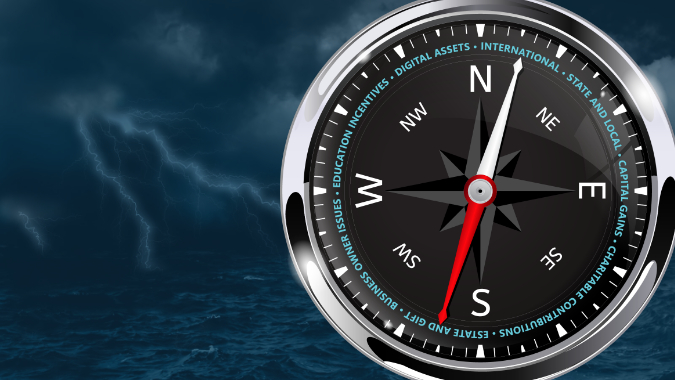
$2 Million or Greater PPP Borrowers Will Need to Submit Loan Necessity Questionnaire for Forgiveness
- Published
- Nov 4, 2020
- Topics
- Share
It appears that the Small Business Administration (“SBA”) intends to supplement the loan forgiveness application of larger Paycheck Protection Program (“PPP”) borrowers with a new form to assess a borrower’s good faith certification of loan necessity.
On October 26, 2020, the SBA published a notice in the Federal Register seeking, in part, approval from the Office of Management and Budget to collect information through new Forms 3509 (for-profit borrowers) and 3510 (non-profit borrowers). The applicable form would be used for PPP borrowers that, together with affiliates, received loans with an original principal amount of $2 million or greater. The information collected would be used “to inform SBA’s review of your good-faith certification that economic uncertainty made your loan request necessary to support your ongoing operations. Receipt of this form does not mean that SBA is challenging that certification.” The form would be submitted, along with the required supporting documents, to the lender servicing the borrower’s PPP loan within ten business days of receipt from the lender. Failure to complete the form and provide the required supporting documents may result in SBA’s determination that the borrower is ineligible for either the PPP loan, the PPP loan amount, or any forgiveness amount claimed, and SBA may seek repayment of the loan or pursue other available remedies.
The collection of information in connection with the loan forgiveness process is consistent with the indication in the PPP loan FAQs that SBA would review all loans in excess of $2 million . Nonetheless, the level of detail and depth of some of the questions will undoubtedly surprise many, if not most, affected PPP borrowers.
Following is a summary of the information required (together with supporting documentation) on Form 3509 to be used by for-profit borrowers. Form 3510 for non-profit borrowers is similar, though taking into account certain considerations that are different for those borrowers.
Business Activity Assessment
- What was borrower’s gross revenue in the second calendar quarter (Q2) of 2020? If borrower existed in Q2 2019, what was borrower’s gross revenue in Q2 2019? If borrower did not exist in Q2 2019, what was borrower’s gross revenue in the first calendar quarter (Q1) of 2020? (Seasonal borrowers may provide gross revenue information for the third calendar quarter (Q3) of 2020 and 2019.)
- Since March 13, 2020 (date of National Emergency Declaration by President Trump), has borrower been ordered to shut down by a state or local authority due to COVID-19? Which state or local authority? Provide the start and end dates (or ongoing).
- At any time since March 13, 2020, has borrower been ordered to significantly alter its operations by a state or local authority due to COVID-19? Provide the start and end dates (or ongoing). What were borrower’s approximate additional cash outlays for these mandatory alterations? How were borrower’s operations altered due to the order –
- The number of people permitted in a location at one time was reduced or capped
- Service was restricted to outdoors
- Employee workspaces were reconfigured
- Other (describe)?
- At any time since March 13, 2020, has borrower voluntarily ceased or reduced its operations due to COVID-19? Provide the start and end dates (or ongoing). Why did borrower voluntarily cease or reduce operations –
- Employee(s) contracted COVID-19
- Borrower’s supply chain (e.g., a supplier of goods or services that are essential to borrower’s operations was unable to deliver due to COVID-19)
- Other (describe)?
- At any time since March 13, 2020, has borrower voluntarily altered its operations due to COVID-19 (other than ceasing or reducing operations)? Provide start and end dates (or multiple start/end dates if staggered). What were borrower’s approximate additional cash outlays for these voluntary alterations? How were borrower’s operations voluntarily altered –
- The number of people permitted in a location at one time was reduced or capped
- Service was restricted to outdoors
- Employee workspaces were reconfigured
- Other (describe)?
- Between March 13, 2020 and the end of the loan forgiveness covered period of the PPP loan, did borrower begin any new capital improvement projects not due to COVID-19? If yes, what were borrower’s approximate cash outlays for those projects?
- What is borrower’s primary six-digit NAICS code?
Liquidity Assessment
- As of the last day of the calendar year immediately before the date of borrower’s PPP loan application, how much did borrower own in cash and cash equivalents?
- Between March 13, 2020 and the end of the loan forgiveness covered period of the PPP loan, has borrower paid any dividends or other capital distributions (other than for pass-through estimated tax payments) to its owners? If yes, what was the total amount of all dividends or other capital distributions between March 13, 2020 and the end of the loan forgiveness covered period of the loan?
- Between March 13, 2020 and the end of the loan forgiveness covered period of the PPP loan, has borrower prepaid any outstanding debt (i.e., paid before contractually due)? If yes, how much?
- During the loan forgiveness covered period of the PPP loan, were any of borrower’s employees compensated in an amount that exceeds $250,000 on an annualized basis? (Compensation covers gross salary, gross wages, gross tips, gross commissions and allowances for dismissal or separation.) If yes, how many of such employees were there and what was the total amount of compensation during the loan forgiveness covered period for all such highly compensated employees?
- During the loan forgiveness covered period of the PPP loan, were any of the borrower’s owners who work at borrower compensated by borrower in an amount that exceeds $250,000 on an annualized basis? If yes, how many of such owners were there and what was the total amount of compensation during the loan forgiveness period of all such owners?
- On the date of borrower’s PPP loan application, were any of the borrower’s equity securities listed on a national securities exchange? If yes, what was borrower’s market capitalization on the date of borrower’s loan application?
- On the date of borrower’s PPP loan application, did any publicly traded company own 20% or more of any class of borrower’s outstanding equity securities? If yes, provide name and market capitalization of all such publicly traded companies.
- If the answer to the last question is “NO,” what was the book value (shareholder’s equity value) of borrower as of the last day of the calendar quarter immediately before the date of borrower’s PPP loan application?
- On the date of borrower’s PPP loan application, was borrower a subsidiary of (i.e., was at least 50% of borrower’s common equity, or equivalent equity interest, owned by) another company (“parent company”)? Was parent company organized or incorporated outside the U.S.? If any of the equity securities of borrower’s parent company are listed on an a national securities exchange or on a securities exchange in a non-U.S. jurisdiction, what was the market capitalization of the parent company on the date of borrower’s PPP loan application?
- On the date of borrower’s loan application, was 20% or more of any class of borrower’s outstanding equity securities owned by a private equity firm, venture capital firm, or hedge fund (including a fund managed by any such firm)?
- On the date of borrower’s PPP loan application, was borrower an affiliate or a subsidiary of a foreign, state-owned enterprise (i.e., a company at least 50% owned by a foreign state) or of a department, agency, or instrumentality of a foreign state? Provide name.
- Did borrower directly receive any funds from any CARES Act program other than PPP, excluding tax benefits? If yes, provide amount and the program name or describe funding source.
Certifications
- The authorized representative of borrower must certify that the information in the questionnaire and all supporting documentation is true and correct in all material respects, subject to civil and/or criminal penalties for making a false statement to obtain a guaranteed loan or forgiveness of an SBA-guaranteed loan.
Observation
For PPP borrowers with loans of $2 million or greater, now is the time to gather the necessary documentation in anticipation of having to complete Form 3509 (Form 3510 for non-profits) or a similar form as part of the loan forgiveness process. As noted above, once the form is requested, there will only be a ten–business-day turnaround period.
Contact EisnerAmper
If you have any questions, we'd like to hear from you.
Receive the latest business insights, analysis, and perspectives from EisnerAmper professionals.











